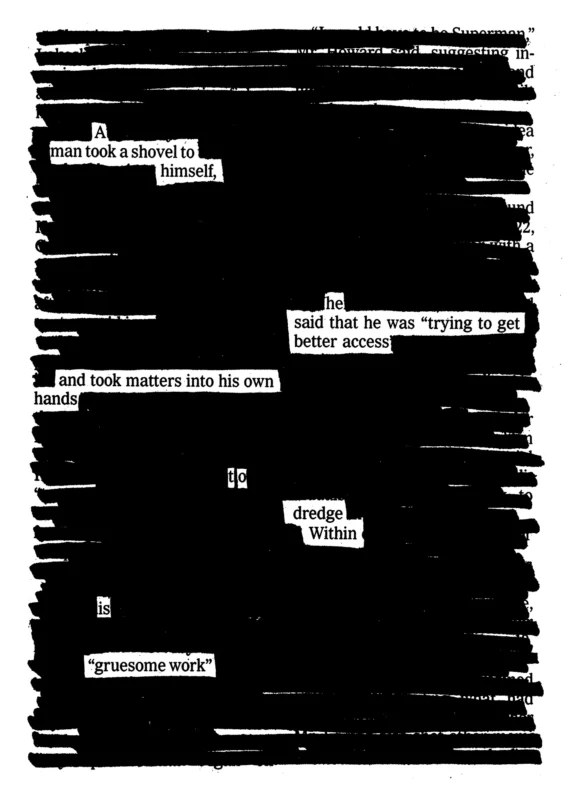
Last Friday’s letter, “Against Prognostication,” began with a collage I made around a drawing Warren Craghead sent me on a postcard and continued:

Last Friday’s letter, “Against Prognostication,” began with a collage I made around a drawing Warren Craghead sent me on a postcard and continued:
In brain-scrambling times like these, I like to read old books. I’m currently reading one of Michel de Montaigne’s essays every morning to avoid a.m. doomscrolling. 400 years ago, Montaigne wrote in “On Prognostications” about “the stubborn curiosity of our nature which delights in worrying about the future as if it had not enough to deal with in the present.” He then quotes Lucian: “Let the mind of men be blind to what is to be. May those who fear be permitted to hope.”
The letter ended with this page from Keep Going (which is only $1.99 on ebook for the rest of the month):

You can read the rest of the letter here.
My friend Dave Gray interviewed me way back in January for his “School of the Possible.” We talked about creative habits and making a life while making a living. You can watch it on YouTube.

My guide to staying creative in chaotic times is only $1.99 on ebook for the rest of November.
Today’s newsletter was an excuse to link these three books at my spot on the kitchen table — Roland Allen’s The Notebook: A History of Thinking on Paper, my late summer/fall diary (started on Oahu back in August), and Chris Ware’s Acme Novelty Datebook Volume Three, the final installment in his sketchbook series.
It was also an excuse to post these drawings from my sketchbook:
You can read the whole newsletter here: “On memory and notebooks.”

In the words of a reader, the newsletter is “super-juicy this week.” I had the most fun sharing a bunch of Halloween links:
2. Spooky reading: I really don’t think you can go wrong with the classics. I love Frankenstein, Dracula, and Strange Case of Dr Jekyll and Mr Hyde — as with many classics, they’re much weirder than you can even imagine. I also love short story collections — a big favorite of mine in recent years was Lafcadio Hearn’s Japanese Ghost Stories.
3. Spooky ear candy: If you’re throwing a Halloween party, I made a silly little “Monster Mash” playlist you can throw on. (I love this Halloween Nuggets: Monster Sixties A Go-Go box set.) I also recommend Walter Martin’s Halloween episode. If you just want some solo October vibes, check out my mix “The October Country.” And I told you about Cindy Lee’s Diamond Jubilee back in April, but it’s now available on Bandcamp. Probably my favorite album released this year — check out the song “Dracula.”
4. Spooky viewing: We watched the original 1942 Cat People with the kids and they seemed to dig it. I love those old horror movies produced by Val Lewton — we might try I Walked With A Zombie on them next year. Other hits with the kids are the classic Universal monster movies like Frankenstein and Creature from the Black Lagoon. I’ve heard Over the Garden Wall is good, but haven’t checked it out yet — there’s a new two-minute stop motion film coming soon to celebrate its 10th anniversary. If you need something lighter, there’s always It’s The Great Pumpkin, Charlie Brown — preferably from a bootleg VHS rip with vintage commercials, since Apple TV owns the streaming rights now and it won’t be broadcast on TV. (I’ve stopped relying on streaming media for our holiday favorites and buy classics I know we’re going to watch again on physical media.) For really little ones, I recommend Room on the Broom.
You can read the rest here: “Digging deep.”
This site participates in the Amazon Affiliates program, the proceeds of which keep it free for anyone to read.